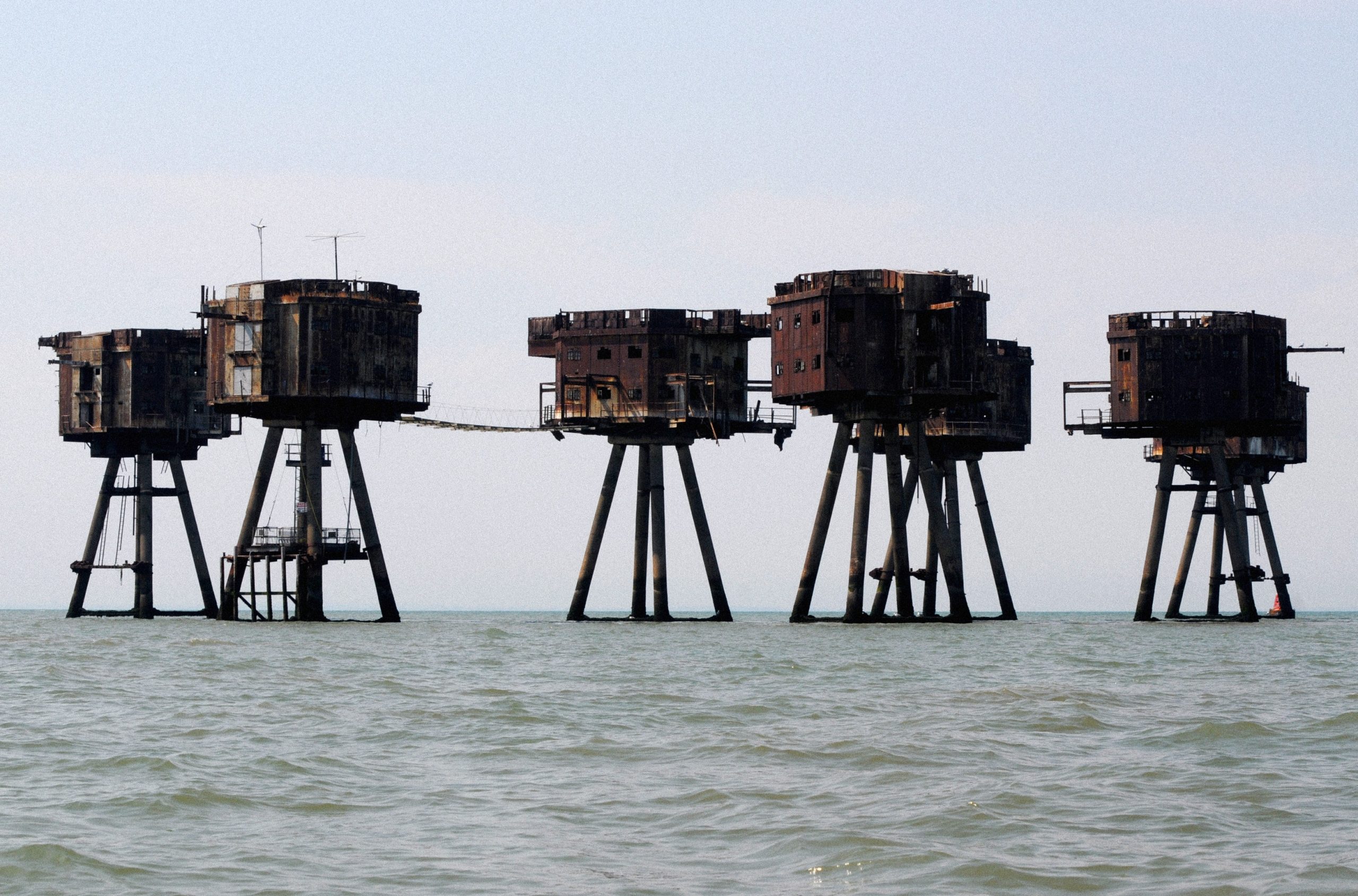The history of the country’s oldest engineering firm is also the history of the profession of engineer. This makes ‘140 years of Royal HaskoningDHV’ exciting.
Maunsell defence fortresses at the mouth of the Thames River. The expertise of British engineers in harbour engineering helped strengthen the then Bureau Haskoning in 1994. (Photo: James Boreham / Unsplash)
‘They were exciting times’, wrote Judith Gussenhoven, author of Shaping the future / De toekomst maken – 140 years of Royal HaskoningDHV about the end of the 19th century. ‘Because of developments in mathematics and statistics, scientific principles became based on ‘prediction through calculation’ instead of on ‘chance and experience’. The mood of apathy that characterised the beginning of the 19th century had been replaced by optimism and a desire for improvement, directly inspired by scientific progress and the introduction of machinery’.
Gussenhoven wrote the anniversary book for the engineering firm Royal HaskoningDHV that will celebrate its 140th anniversary on Friday 15 October. When the TU Delft engineers Johan van Hasselt and Jacobus de Koning established their firm J. van Hasselt en De Koning in Nijmegen in 1881, it was the first independent consulting firm that ‘in principle only wanted to work with “purely scientific and technical labour” and thus emphatically excluded trade in the form of agents (i.e. to act as representatives of other firms).’ All the chapters in the book have now been published online.
Engineering firms still ride the waves of the international economy. At first, at the end of the 19th century, steam, iron and railways were the determining factors, initially on the domestic market, but quickly in all the hubs of international trade. The story of Jacobus de Koning who went to Cairo to design a railway bridge typifies this. The company’s real expansion only started after World War Two. There was much work in reconstruction, and after that Dutch engineers went to all corners of the world to use their technical knowledge. They worked on ports, rivers, canals, land reclamation, polders, drainage, irrigation, road construction, sewage systems, urban development and mapping. Whatever was needed, they did it. A review of project files dating from 1983 shows that the engineering firm DHV had 538 projects abroad while Haskoning had 702. Gussenhoven says that these figures probably do not include them all.
Another striking feature is that engineering firms were keen to seek each other out. There are five surnames incorporated in the name of the celebrating firm – Van Hasselt, De Koning, Dwars, Heederik and Verhey – but in reality there were many more pioneers who became involved in a series of take-overs. In 2002 the engineering firm Haskoning renamed itself Royal Haskoning after merging with all its daughter companies. Ten years later, the merger with DHV followed, making it the company it is today.
After that merger, ‘RHDHV’ is still the oldest engineering firm in the Netherlands, even though it may not be the biggest in terms of worldwide turnover. This year, it is in third place after Arcadis and Fugro in the Ingenieursbureaus Top 50 (top 50 engineering firms, in Dutch).
- Are you interested in the book? Email your postal address to j.w.wassink@tudelft.nl for one of the five free books (the books are in English and Dutch) that the company is making available.
Do you have a question or comment about this article?
j.w.wassink@tudelft.nl


Comments are closed.